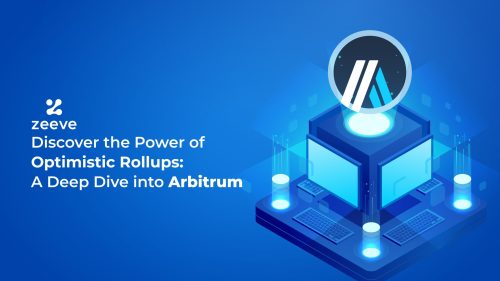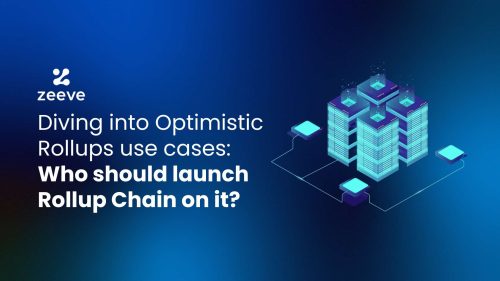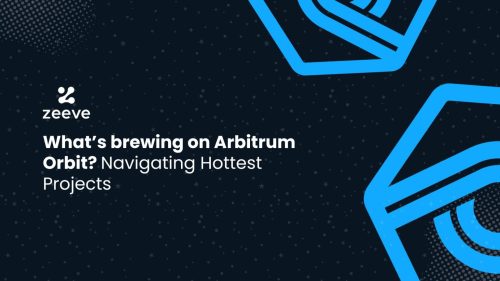State of Blockchain Rollups in 2024
Blockchain rollups; whether Optimistic or zero-knowledge, both are designed to address the problem of Ethereum scalability through the approach of taking transaction computation off-chain. Over the years, the rollup ecosystem has undergone several changes, and thus, it has become highly mature. Now that we are in 2024, it’s important to understand how rollups operate in current times and what all is happening today. This helps existing projects to dive deeper into the comprehensive rollup concept while those who are getting started will have a clear idea of what stack will be ideal for them. Through this detailed report, we will understand the state of rollups in 2024. Also, we will have a quick recap of the evolution of rollups over the years.
Key takeaways:
- Modular blockchains are becoming the spotlight in 2024.
- Arbitrum is keeping the momentum with more than 32% of total rollup’s TVL.
- Optimism is retaining its leading position with its innovative infrastructure offerings.
- Base has crossed 2M in daily transactions with over $1B TVL.
- Ethereum’s pro-dank sharding update has raised the popularity of Optimistic rollups.
- Optimism’s Bedrock upgrade continues to accommodate lower gas cost and faster block confirmation.
- Rollup-as-a-service (RaaS) is becoming a preferred option for seamless launch and management of rollups.
Rollups Launch and evolution in its landscape to date
The concept of rollups as a powerful scaling solution was first driven around 2021 by Ethereum’s co-founder, Vitalik Buterin. In this research, he talked about Layer2 rollups as a means to improve Ethereum’s efficiency by taking the computation off-chain on a separate layer where congestion is extremely low. At that time, token transfer on Ethereum’s base layer cost ~45000 gas, whereas the same took up ~300 gas in rollups. Hence, rollups got its firm grip in the web3 space, contributing to the development of advanced rollup chains like Arbitrum, Optimism, ZkSync Era, and Polygon zkEVM.
Arbitrum is the first to launch Layer2 rollups as it released classic optimistic rollups in 2012. Besides offering a public rollup aggregating a total of $150 billion transactions, Arbitrum offers its advanced rollup stack– Arbitrum Orbit, to accommodate development of standalone L2/L3 rollup chains. Optimism was introduced a few months after Arbitrum, in Dec 2021. This rollup gathered popularity because of its approach of using multi-round proofs, thus lowering the gas consumption significantly. Also, Optimism is known for its Superchains built through OP Stack, which has been even more feasible after the Bedrock update. Total transactions on Optimism is currently recorded at 263.66M. Polygon zkEVM and ZkSync Era launched their mainnet later and rolled out their distinct stacks– Polygon CDK and ZkSync hyperchains that are witnessing fast adoption. Total transaction on Polygon zkEVM is 11.16M and 37.721334B on zkSync Era as of now.
Inspecting the state of Layer2 Rollups in 2024
Let’s dive into the state of rollups in 2024, exploring everything that is happening currently on the rollups’ landscape. From the growth in rollup chains to the market expansion and innovation, we will have a broader view of it.
Dominance of new Layer2 rollups
There has been rapid growth in the rollup space, which has led to the development of several new rollup chains. Speaking about 2023, new Layer2 rollups like Base and zkSync Era were launched and as of December, these two chains recorded the third highest TVL (total value locked). Also, Base at times surpassed the amount of Arbitrum and Optimism’s TVL. However, these are the widely used rollups with hundreds of projects already running on their ecosystem. Here’s a snapshot of the 2023’s TVL for popular rollups.
Even in 2024, Base is recording 2.52M transactions, higher than leading Optimistic rollups; Optimism and Base are seeing 1.58M and 586.66k, respectively.
Regarding zkRollups, ZkSync Era (906.65k) and Manta Pacific (71.53k) are recording higher daily transactions compared to Polygon zkEVM (20k).
The reason behind new rollups’ surge in adoption can be varied. For example, Base initially acquired 11M+ verified users because it has the backing of the most trusted and respected name– Coinbase. Plus, users will be able to tap into the broad liquidity of Coinbase.
Similarly, for ZkSync Era, their idea of offering unprecedented scalability and modularity through ‘Hyperchains’ can be one of the biggest reason for its rapid adoption, aggregating more than a million transactions within the initial 3-4 days of launch as mentioned in their official twitter post.
Notable fluctuations in rollups TVL:
Adoption of new rollups definitely has a significant impact on the TVL across major chains. Like, if we look at the stats of the first the above image, Base Arbitrum currently accounts for the highest TVL across all the rollups with 32.26% market share, then there is Base with 19.25% and Blast with 18.54% while Optimism and zkSync Era has 10.5% and 1.78% respectively. That’s about present, but if we look back a year ago, Arbitrum accounted for 65.04% of total TVL, Base and Blase simply 0%, while Optimism had 32.29% TVL.
Here, we can see that Arbitrum and Optimism have seen notable decline in their TVL (based on 1-year data), despite the growing innovation in their ecosystem and a good number of projects built on them; Arbitrum- 613 and Optimism- 233. On top of that, zkSync Era being a new rollup has 107 projects. As we already discussed, the reason for growth of new rollups are their unique features, high TPS guarantee, and most importantly the provision of low gas cost.
For example, zkSync Era promises to handle up to 10,000 TPS using the zkPorter technology in Hyperchains. Likewise, Blast is getting fast adoption as a specialized Layer2 having native yield for ETH and Stablecoins. Its yield comes directly from ETH staking and real-world asset (RWA) protocols. Plus, the default interest rate on Blast is 4% for ETH & 5% for stablecoins. Base’s factor for adoption we have discussed already.
Coming to the decline in Arbitrum is said to be the protocol’s liquidity shrink. This implies that network’s participants have a lack of trust in getting enough yield as return. However, Arbitrum is now again getting the hold with a jump of 330.1k to 472k daily active addresses in the past 30 days.
Source: Artemis
Optimism’s decline in TVL can be due to many reasons, such as late adoption of Superchains, customization challenges after Bedrock upgrade, as well as other pain points like delayed withdrawals, complicated framework, asynchronous cross-chain transactions, and more. However with 40+ superchain projects, including big names like opBNB, Mantle Network, and Worldcoin, Optimism seeks to raise its TVL soon.
Expansion of Modular Rollups:
2024 is the year of modular rollups, due to the inception of highly innovative modular networks like Celestia for off-chain data availability, Espresso for decentralized sequencing, Risk Zero as proving network, and more as seen in the below image. These 100+ teams are capable of making a difference with their specific modular rollup offerings.
With that, top modular rollup frameworks such as Polygon CDK, ZK Stack, Arbitrum Orbit, and OP Stack are getting boost, offering unique features like EVM-compatibility, EIP-4488 support, off-chain DA options, unified liquidity, easy modularity, very high TPS, and a lot more.
Source: Trustless Labs
Cost optimization after Dencun upgrade:
Ethereum’s Dencun upgrade rolled out in 2024, introducing “blobs’ ‘ through EIP-4788 to make transactions extremely cheaper for Layer2s. Arbitrum, Polygon, Optimism, Zora, Mode, Starknet, and Metis are the forerunners in adding support for the Dencun upgrade to offer low-cost transactions. The below stats shows the amount of fees that these Layer2s spend in USD as network fee, following the Dencun upgrade:
Rise of Rollups-as-a-service (RaaS) Solutions
Rollups-as-a-service (RaaS) Solutions providers are becoming indispensable in 2024, offering essential services for seamless launch, scaling, and maintenance of various rollup solutions. Here’s a list of top RaaS providers that will be rollups’ preferred partners to simplify L2/L3 deployment and management. With specialized services like low-code deployment, Enterprise SLA, and 24/7 network monitoring, RaaS providers are gaining momentum over time.
Looking Forward
From this extensive research, it’s clear that 2024 is a promising year for rollups as its ecosystem is brimming with so many innovations such as modularity, higher scalability, cross-chain interoperability, and unique concepts like Hybrid rollups. Additionally, as the rollup ecosystem matures, it will continue to drive better innovations to improve performance and sustainability for 2024 and beyond.







Responses